Millicent Eames'Ancestors |
Click on a name for info, click on an arrow to follow that branch, click Home to go to the main page, or click for an Alphabetic List of all Names. |
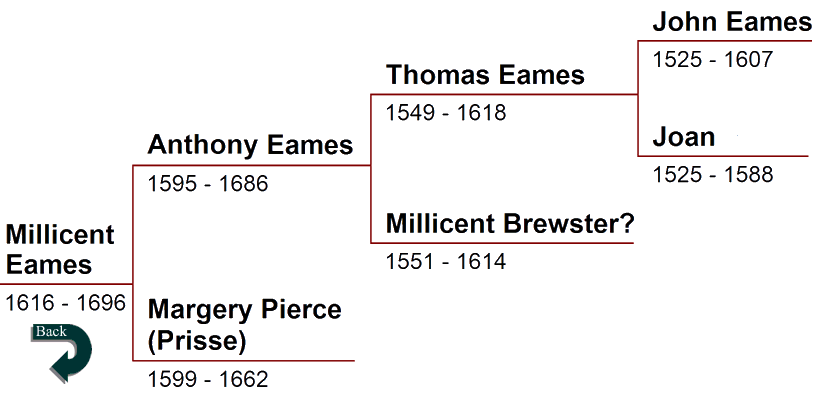 |
| Note: Before 1752 the year began on March 25th. Dates between January 1st and March 24th were at the end of the year, not the beginning. |
Anthony was said to have been well educated, but as the son of a Yeoman he would not have attended university. He likely attended the Dorchester “Free School”, probably between 1602 and 1611. The schoolmaster was the Rev Robert Cheeke who soon became firm friends with the Rev John White when he arrived in 1606; Anthony was then at an impressionable age of around 11. With Rev. Robert Cheek as his schoolmaster, Rev. Edward Pele his rector, and the Rev. John White the Patriarch we have three of the main drivers behind the formation of the Dorchester Company and emigration to New England. It is easy to see how as the youngest son of a Yeoman who needed to establish himself, he would have been swept up in their enthusiasm and drawn into emigration.
The three Churches for Dorchester and that of Fordington have always worked closely together. In 1629 into this mix arrived a real firebrand of a Minister in the shape of the Rev. William Benn a new Rector for All Saints Church. The parish of All Saints adjoined that of Fordington so as constable and church warden he would have known Benn and had to deal with the many issues that would have arisen between them. It was at this juncture that Anthony decided to emigrate. He was closely involved with enthusiastic supporters of emigration Reverend John White, Robert Cheeke and the Reverend Edward Pele. Anthony was well informed about the settlement and the opportunities that were arising there from letters sent back to his sister-in-law Alice from her three brothers who went in 1628. He would have known for example that Ralph Sprague had been selected to sit on the first ever Jury empanelled in Charlestown and that he and his brother Richard were both made 'Freemen' in 1631. Just how close this relationship was is evident from the third brother William Sprague's subsequent marriage to his daughter in 1635 only a year after he was to arrive in Charlestown. Another big incentive for Anthony was that settlers were being promised ownership of land. Although the Eames Family were Yeomen and well established in Fordington there is no mention of any of them actually owning land in England. Emigration therefore afforded a much greater and more rapid opportunity to own large amounts of land and take part at the highest level within these newly forming communities. Anthony Eames left on the ship Recovery of London, which sailed from Weymouth on March 31, 1634 for New England. The passengers were recorded as Planters carrying with them household goods, clothing and provisions for themselves, their wives, children and servants, valued at £920 and allowed to pass free of customs by His Majesty's patent. Their Journey to New England would have taken about 3 months, so they probably arrived in late June or July, 1634. It was very likely one of the fourteen ships said to have arrived at Massachusetts Bay on June 16th of that year . Anthony and family settled initially in Charlestown in what is now Massachusetts and quickly re-established their relationship with the Sprague brothers. He was listed as a proprietor of Charlestown so it would appear that he was granted land there in 1634. The first documentary evidence of their presence in Charlestown occurs on February 10, 1635 when Anthony signed the Selectmen Government Agreement along with Richard and William Sprague. This agreement effectively set down the means by which Freemen Citizens of Charlestown were to select their representatives for Government. The family was soon moved to Hingham, where in 1636 a plot of land was granted to them on the lower plain. From the outset Anthony appears to have been one of the foremost citizens of Hingham. He was admitted as Freeman, on March 9, 1636, was frequently a town officer, and represented the town in the general court in the years 1637 to 1639 and 1643 to 1644. On January 13, 1638, Anthony Eames was one of the Deputies of the General Court who signed the charter granted by Winthrop for the Military Company of Massachusetts that was later renamed the Ancient and Honourable Artillery Company, the third oldest chartered military organization in the world. Anthony was appointed as a Lieutenant in the Hingham Train Band (Militia). This would have been a natural development of using his experience gained in England from his service with the militia. Because of his rank in society and annual income he would have been required to provide his own horse and served in what was later to be called the Yeomanry to distinguish it from the infantry. In 1641 Anthony also assisted in laying out the boundary line between Massachusetts Bay and the Plymouth Colonies. and on June 12, 1643 he entered into a partnership to operate the first ever Corn Mill near the cove in Hingham for the use of the town. His partners were Samuel Ward and Bozoan Allen who had arrived on the Diligent. In the year 1645, Anthony Eames was involved in a local incident in Hingham which was to not only shatter the existing harmony within the settlement and result in long lasting divisions in the community but escalate into a major confrontation between his opponents and the authorities in Boston and end with what later became known as the impeachment of John Winthrop Anthony moved to Marshfield Hills in Plymouth Colony where on December 10, 1651 he and his son Mark bought a house and 100 acres of land lying upon the North River. (Mouse over the image right for more details and then click on it to read an enlargement of the list of folks who lived on the rivers.) For many generations the Eames family continued to live there. Anthony was deputy to the general court at Plymouth from 1653 to 1658 and again in 1661 and became a member of the Council of War in 1657. He was admitted freeman in the Plymouth Colony on June 7, 1653 and served the town as moderator. Some researchers claim Anthony died in early October of 1686 at the age of 91, and was buried at Marshfield on the October 6, 1686. Unfortunately, Anthony’s name cannot be found in the badly damaged original Marshfield records nor in the rewritten version of 1879. |
| ~<^>~ |
Margery Pierce (Prisse) was born in 1599 in Fordington, Dorset England. Her parents are not known, so her last name is uncertain. Unfortunately Bishops Transcripts for Fordington are missing for 1616 and 1617 when she was married to Anthony Eames. But it is certain that her given name was Margery as its referred to in a number of documents including her admission to the church in Charlestown in 1635. They had at least eight children, all born in Fordington and baptized in St. George's – ancestor Millicent (Millisaint); Mark in 1617; John baptized on January 24, 1618 ; Persis baptized on October 28, 1621; Elizabeth baptized on June 13, 1624; Justus baptized on April 29, 1627; Margery baptized on December 5, 1630; and Abigail about 1632.Some researchers say there were three more children born to Anthony and Margery – Anna, born in 1614 who married William Ford; Thomas, who was born in 1618, the same year son John above was born; and Robert in 1629. Records can not be found for any of these children. Researchers say that Margery Eames died on December 13, 1662 in Marshfield Hills in Plymouth Colony and was buried there on the last day of that year. Unfortunately, her name cannot be found in the badly damaged original Marshfield records nor in the rewritten version of 1879. |
| ~< Back to Chart >~ |
Thomas Eames was born in 1549 in Fordington, Dorset, England to John or Thomas and Joan Eames. His childhood was during the turbulent times following the death of Henry VIII leading to the reign of Elizabeth I starting in 1558. Thomas died in Fordington before June 25, 1618, the date he was buried in the Saint George Burial Ground located behind the church (pictured). |
| ~<^>~ |
Millicent Eames died four years before her husband in Fordington before May 23 1614, the date she was buried in the Saint George Burial Ground located behind the church pictured above. |
| ~<^>~ |
|
| ~< Back to Chart >~ |
At one time Fordington surrounded Dorchester to the south, east and west; and the Dorset History Centre, for example, is built on the site of the old Fordington barracks. The village grew up around the church of St. George (where Henry Moule was once Vicar), though the parish was much larger and surrounded Dorchester on three sides. The Church of St George dominates the parish, dating from the 15th Century and antiquities abound within its boundaries including the celebrated amphitheatre of Mambury which was discovered by Sir Christopher Wren, and the Hill Fort of Poundbury with its Roman aqueduct. |
| Much of the above information on the Eames family came from Pilgrims from Fordington, The EAMES Family, An Account of the life of Captain Anthony Eames (1595 – 1686) Churchwarden of St Georges Church & Constable of Fordington Manor and much more detail and photos can be found there. |
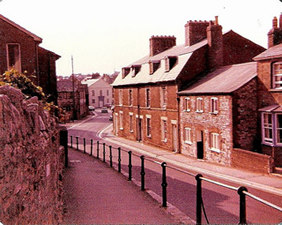 Anthony Eames was born in 1595 in
Anthony Eames was born in 1595 in 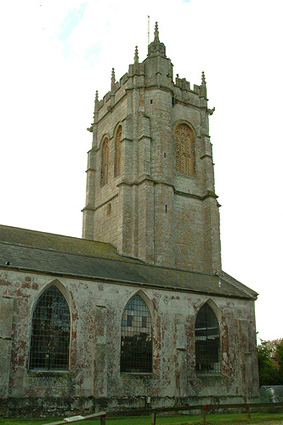 When Anthony was 21, he married Margery Pierce, 17 about the year 1616 in Fordington. See Margery P. below for children. He rapidly gained respect and trust within the tight knit community in Dorchester. He was appointed church warden of St Georges (pictured left) for the years 1622, 1627, and 1631. He was sworn in as Constable for the Manor of Fordington at the Quarter Sessions held in Sherborne from April 6th to 8th, 1630. The position of Constable required someone of good standing and well respected in the community.
When Anthony was 21, he married Margery Pierce, 17 about the year 1616 in Fordington. See Margery P. below for children. He rapidly gained respect and trust within the tight knit community in Dorchester. He was appointed church warden of St Georges (pictured left) for the years 1622, 1627, and 1631. He was sworn in as Constable for the Manor of Fordington at the Quarter Sessions held in Sherborne from April 6th to 8th, 1630. The position of Constable required someone of good standing and well respected in the community.
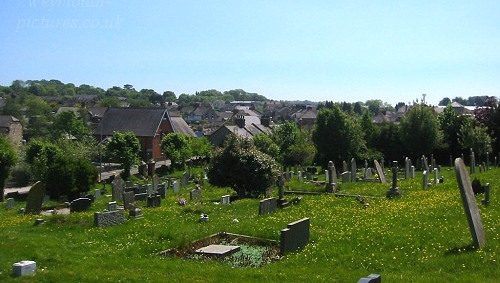 He married Millicent Brewster (last name uncertain) there on the estimated date of June 26, 1576 in Saint George’s Church. (Their marriage date predates the start of the Fordington marriage register which begins late in the year 1577.) They had at least five children together (see his wife Millicent for details). It is believed that Thomas was a Yeoman, which meant he had a distinct social position. The reason for this belief is that his oldest son John, who died fairly wealthy and was a yeoman, would have inherited his estate and position from his father. A yeoman was considered “…. below that of a gentleman who employed servants to carry out all the work of running the household and attending to the land. A yeoman and his wife would put their own hands to running their house and holdings which would be larger and more prosperous than those of a general husbandman but often still be prosperous enough to employ a servant(s). The standing of Yeomen is reflected in the use of the word for the local volunteer force where they were mounted on their own horses, as distinct from the militia (i.e. infantry).”
He married Millicent Brewster (last name uncertain) there on the estimated date of June 26, 1576 in Saint George’s Church. (Their marriage date predates the start of the Fordington marriage register which begins late in the year 1577.) They had at least five children together (see his wife Millicent for details). It is believed that Thomas was a Yeoman, which meant he had a distinct social position. The reason for this belief is that his oldest son John, who died fairly wealthy and was a yeoman, would have inherited his estate and position from his father. A yeoman was considered “…. below that of a gentleman who employed servants to carry out all the work of running the household and attending to the land. A yeoman and his wife would put their own hands to running their house and holdings which would be larger and more prosperous than those of a general husbandman but often still be prosperous enough to employ a servant(s). The standing of Yeomen is reflected in the use of the word for the local volunteer force where they were mounted on their own horses, as distinct from the militia (i.e. infantry).”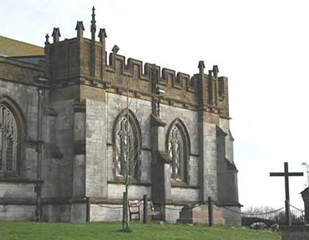 Millicent Brewster (last name uncertain) was born in 1552 in
Millicent Brewster (last name uncertain) was born in 1552 in 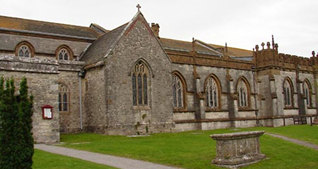
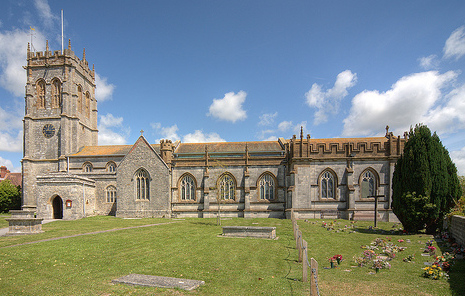 Fordington could now be considered a suburb of Dorchester, but is actually a village in its own right. Fordington’s High Street runs directly off the lower end of Dorchester's though much quieter in nature, its green still retaining a village 'feel.' Fordington derives its name from the ford over the river Frome, which is now crossed by several bridges.
Fordington could now be considered a suburb of Dorchester, but is actually a village in its own right. Fordington’s High Street runs directly off the lower end of Dorchester's though much quieter in nature, its green still retaining a village 'feel.' Fordington derives its name from the ford over the river Frome, which is now crossed by several bridges.